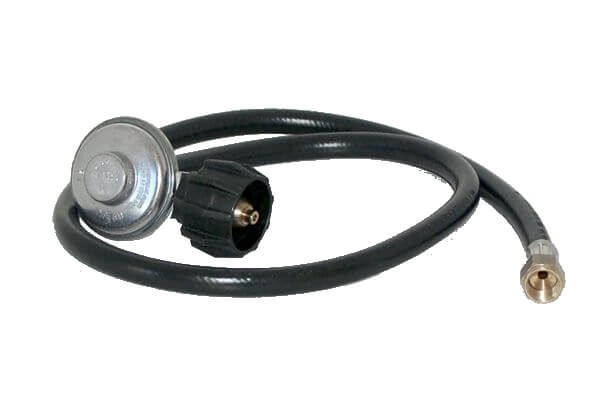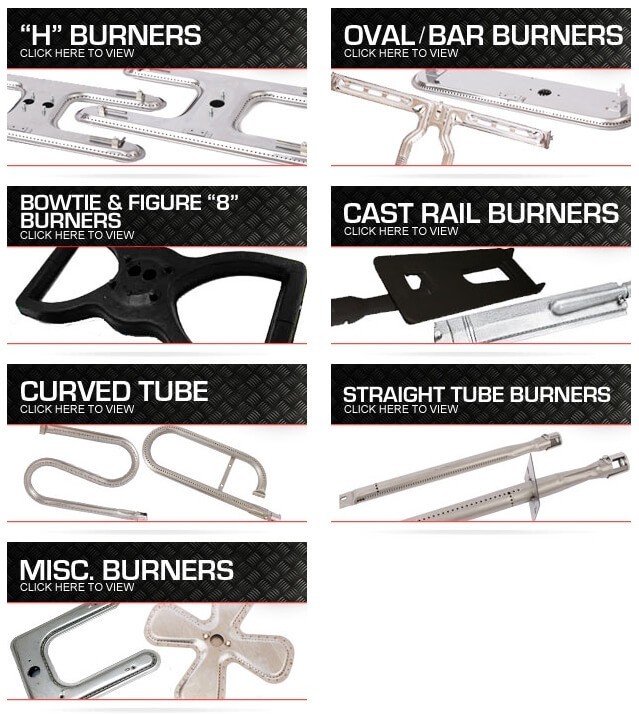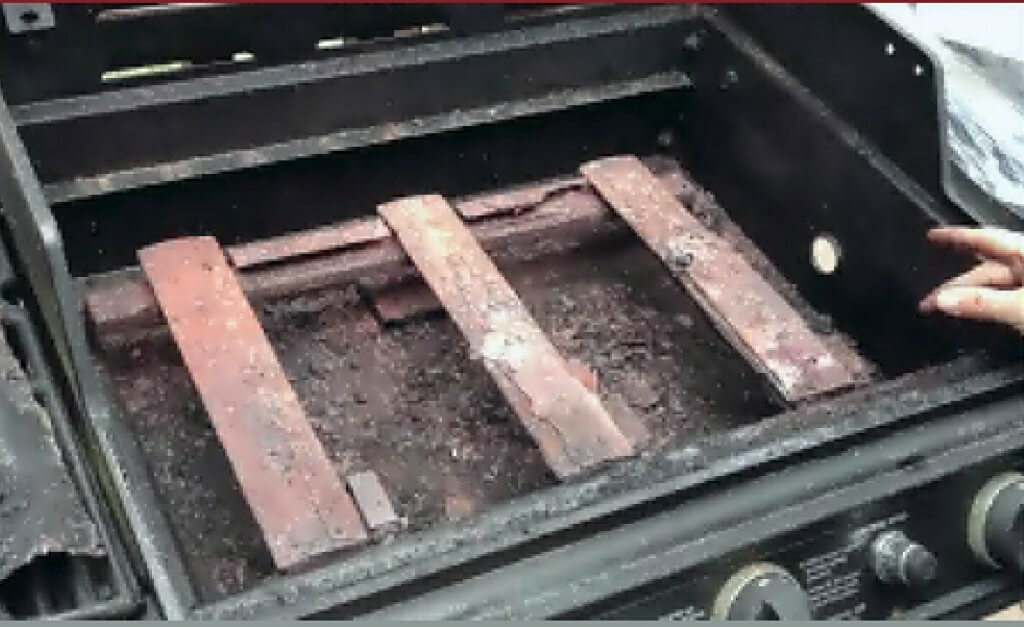What are gas grill regulators and do you need to replace yours?
The term “regulator” is usually used in the grill world to describe the gas grill regulators, hoses and fittings that bring gas from your LP tank and connects it to your grill.

Technically, the regulator is the silver colored disc part that looks like this:

The hose connects it to the brass fitting which is the part that screws onto your grill. Right next to the regulator is a collar that twists freely. That’s the part that screws onto the LP tank. Though you should always turn off your LP tank when you’re done cooking or when you’re changing the regulator, LP tanks are made with an automatic shut off valve. It will only work when a regulator hose is connected to it.
How do you know when it’s time to replace your regulator?
As I mentioned, the regulator brings gas to your grill burners. Here are some indicators you need a new gas grill regulator
- Low heat coming from your burners when your gas is turned on high. Do a visual check on your burners to make sure they are all in one piece and there are no obvious holes or problems.
- Your burners light up unevenly. For example, if the burner on the far right flickers or hardly lights, the middle burner has low flame, and the left burner has a normal looking flame.
- Over time your grill gets less and less hot. Last week it took 10 minutes to grill some burgers, but today it took 15 to grill the same burgers.
WHY? Regulators, for safety reasons, close down slowly over time as they “go bad.” You probably won’t notice one day your grill is perfect and the next it doesn’t light at all. The burner closest to the source of gas will light up better than those farther down the manifold. Your grill will get to lower and lower temperatures over time, even on “high” heat. The main indicator of needing a new regulator is low heat or low flames, especially if it’s getting worse over time.
What else could go wrong?
Keep in mind that you may also have a problem running along the hose. Be aware of the smell of gas even when your grill is off or a tiny hissing sound.
Some animals like to chew on the sun-baked rubber hoses. (Don’t knock it ’til you try it?) If this is a problem for you, they have invented handy-dandy hose guards. Check them out.
If you think there’s a leak, but you’re not sure, you can check the hose with some very soapy water. Rub the suds all the way along the line of the hose. Turn on the gas tank. If there is gas escaping, it will cause the soapy water to bubble at the point of the leak.
What are the differences in gas grill regulators?
A single-hosed, standard regulator is the most commonly used part on grills. It’s the picture I used above. These regulators let out up to 60,000 BTUs of gas.
If you have a side burner, check out this dual-hosed standard regulator. There is one regulator (remember that’s the disc) and there are two separate hoses. Sometimes one hose comes off the regulator and splits into two hoses, forming a Y shape, and sometimes there are two hoses coming directly out of the regulator itself. Either will work and they are interchangeable.
Updated June 2021: Many of our gas grill regulators now support high-flow needs (let out up to 90,000 BTUs of gas). These are compatible with grills that originally used a standard flow. However, please note that your high setting might give you more heat than before. Pay attention the first time you grill with a new regulator and take note of the cook temps!
How do you know?
Usually, the removal and visual inspection of your regulator determines which replacement you need. It’s also a good idea to measure the existing hose and/or the space a hose needs to stretch to reach from the tank to the valve or manifold. If you’re not sure, call 678-272-2451. The staff at GrillPartsSearch.com is always happy to help.
Special Cases
Keep in mind, a standard regulator and hose will not work if you have:
- Natural gas grill (NG)
- A crimped hose onto the valve or manifold in your grill. You will know because you won’t be able to unscrew the hose from your grill. In this case, you need to contact your manufacturer to replace the entire valve system.
- Male fitting on the end of the hose that connects to the grill.
- Hose fitting larger or smaller than a 3/8″ flare, which translates to about a 5/8″ inner diameter measurement of the opening at the end of the fitting.
Here’s a picture of the fitting:

You can’t measure the 3/8.” It’s confusing, I know. Like I said, check for a 5/8″ measurement.
The good news is that this can be the easiest, cheapest part of your grill to fix!
Remember, not all regulators are created equal. Lower quality rubber will degrade and break more easily in the sun. A lower quality regulator can go bad more quickly.
(This theme came from our FAQs. Let me know if you have a question in our comments section and I can answer it there or even write a blog for you!!)
Spring is coming!!!
-GG
Visit GrillPartsSearch.com’s profile on Pinterest.











